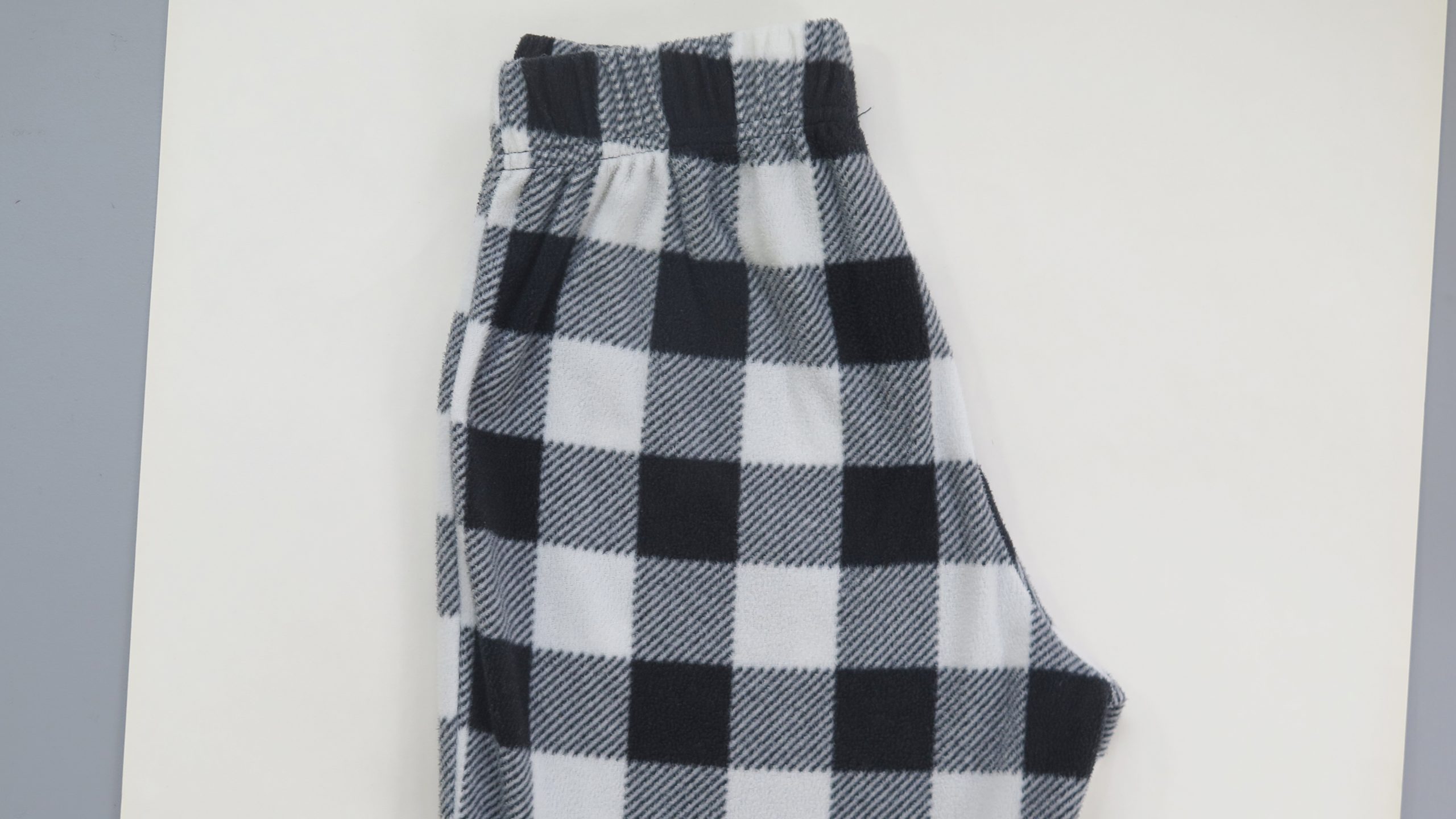Home>How-to Guides>For All>How To Start A Pajama Line


For All
How To Start A Pajama Line
Modified: July 30, 2023
Learn the step-by-step process of starting a stylish and comfortable pajama line, suitable for all, from design to production and marketing.
(Many of the links in this article redirect to a specific reviewed product. Your purchase of these products through affiliate links helps to generate commission for Under-tec.com, at no extra cost. Learn more)
Table of Contents
Introduction
Welcome to the exciting world of pajama fashion! If you have a passion for cozy comfort and a flair for design, starting your very own pajama line can be a fulfilling and lucrative venture. Whether you dream of creating stylish loungewear for women, men, or even children, this article will guide you through the essential steps to bring your vision to life.
As the demand for comfortable and fashionable sleepwear continues to rise, there is an opportunity for entrepreneurs to tap into this market and carve out a niche for themselves. With the right strategies, thorough research, and a bit of creativity, you can establish a successful pajama line that stands out from the competition.
In this article, we will explore the key components of starting a pajama line, from market research and design to manufacturing, branding, and marketing. We will also provide valuable insights on setting up an online store, pricing your products, and building a strong team.
Starting a pajama line requires careful planning and attention to detail. It’s not just about creating beautiful designs; it’s also about understanding your target market, identifying your unique selling points, and delivering quality products that meet customer expectations.
So, if you’re ready to embark on this exciting journey of building your own pajama line, let’s dive into the essential steps that will help you turn your dream into a reality.
Market Research
Before you dive headfirst into creating your pajama line, conducting thorough market research is crucial. This step will help you gain valuable insights into consumer preferences, identify trends, and understand your target audience. It will also enable you to make informed decisions regarding your product range, pricing, and marketing strategies.
Start by analyzing the current market for pajamas. Who are the key players? What are their unique selling points? Are there any gaps or unmet needs in the market that you can capitalize on? Consider factors such as style, fabric choices, price range, and target demographic.
Next, define your target audience. Are you focusing on women, men, or children? What age groups or demographics are you targeting? Understanding your customer’s preferences and needs will guide your design and marketing efforts.
Engage in competitor analysis by researching other pajama brands. Study their designs, quality, customer reviews, and pricing. Identify what sets them apart and brainstorm ways to differentiate your brand from the competition. Look for opportunities to offer unique designs, use sustainable materials, or explore innovative features.
Undertake market research surveys or interviews to gather direct feedback from potential customers. Understand their preferences, shopping habits, and what they look for in sleepwear. This insight will help you tailor your product offerings and marketing messages to cater to their needs.
Additionally, keep up with industry trends and stay informed about emerging styles, fabric innovations, and popular themes. Subscribing to industry publications, attending trade shows, and following influencers in the sleepwear fashion space will provide you with valuable insights and a competitive edge.
Remember, market research is an ongoing process. Continuously monitor customer feedback, adapt to changing trends, and keep an eye on your competitors. This will allow you to stay ahead of the curve and make data-driven decisions to ensure the success of your pajama line.
Design and Development
Design and development are at the core of creating a captivating and unique pajama line. This is where your creativity and vision come to life. Follow these steps to bring your designs from concept to reality:
1. Conceptualize: Start with brainstorming and sketching your design ideas. Consider factors such as style, color, patterns, and themes that align with your brand image and target audience.
2. Create Tech Packs: Once you have finalized your designs, create detailed tech packs. These include specifications such as fabric type, measurements, stitching details, and any additional features or embellishments. Tech packs serve as a blueprint for manufacturers to accurately bring your designs to life.
3. Fabric Selection: Choose high-quality and comfortable fabrics that align with your design aesthetic and customer preferences. Consider factors such as breathability, durability, and ease of care. Conduct fabric testing to ensure it meets your standards.
4. Prototyping: Work with a sample maker or manufacturer to create prototypes based on your tech packs. This step allows you to test the fit, feel, and overall look of your designs. Make necessary adjustments and refinements to achieve the desired outcome.
5. Testing and Feedback: Provide samples to trusted individuals who can give you honest feedback. Consider organizing focus groups or conducting user testing to gather insights on comfort, fit, and style preferences. Use this feedback to fine-tune your designs and address any potential issues.
6. Finalize Designs: Once you are satisfied with the prototypes and have incorporated feedback, finalize your designs and prepare them for production.
Remember, an integral part of the design and development process is ensuring that your pajama line meets safety regulations and industry standards. Familiarize yourself with relevant guidelines for fabric composition, flammability, and labeling requirements.
By investing time and effort in the design and development phase, you can create a pajama line that not only looks great but also delivers exceptional comfort and quality to your customers.
Sourcing Materials and Suppliers
Once your designs are finalized, the next crucial step in starting your pajama line is sourcing the right materials and suppliers. Finding reliable and reputable suppliers will ensure the quality and consistency of your products. Here are some steps to help you navigate this process:
1. Research and Identify Suppliers: Start by researching suppliers who specialize in the materials you require for your pajamas. Look for suppliers who offer high-quality fabrics, trims, buttons, and other necessary components. Trade directories, online platforms, and industry trade shows are great resources for finding potential suppliers.
2. Request Samples: Before committing to a supplier, request samples of their materials. This will allow you to assess the quality, texture, and durability of the fabric. It’s essential to choose materials that meet your desired standards and align with your brand image.
3. Assess Supplier Reliability: Evaluate the reliability of potential suppliers. Consider factors such as their production capacity, lead times, and ability to meet your quantity requirements. You want a supplier who can consistently deliver materials on time and in the quantities you need.
4. Price Negotiation: While quality is important, it’s also crucial to find suppliers who offer competitive prices. Negotiate with suppliers to get the best pricing while ensuring that the quality of the materials is not compromised.
5. Establish Relationships: Building strong relationships with your suppliers is beneficial in the long run. Good communication and a solid rapport will help streamline the production process and allow for smoother transactions.
6. Consider Ethical and Sustainable Sourcing: In today’s conscious consumer market, ethical and sustainable sourcing is becoming increasingly important. Consider working with suppliers who follow ethical labor practices and offer eco-friendly materials and production processes.
Remember to conduct due diligence when selecting suppliers. Read reviews, ask for references, and verify their certifications and industry memberships. This will help ensure that you are partnering with reputable and reliable suppliers.
By sourcing materials from trustworthy suppliers, you can ensure the quality and consistency of your pajama line, which will ultimately contribute to customer satisfaction and brand loyalty.
Creating Prototypes
Creating prototypes is a crucial step in the pajama line development process. Prototypes allow you to test your designs, evaluate the fit and comfort, and make necessary adjustments before moving forward with production. Here’s how you can create effective prototypes:
1. Work with a Sample Maker: Collaborate with a skilled sample maker or pattern maker who can bring your designs to life. Provide them with detailed tech packs, including measurements, fabric specifications, and any additional design details.
2. Choose Prototype Fabrics: Select fabrics that closely resemble the materials you plan to use in production. This way, you can accurately assess how the pajamas will look and feel.
3. Test Different Sizes: If your pajama line caters to multiple sizes, it’s essential to create prototypes in various sizes to ensure a proper fit. Consider using fit models or conducting fit sessions to fine-tune the sizing of your designs.
4. Evaluate Fit and Comfort: Try on the prototypes yourself or have fit models test them out. Assess the overall fit, comfort, and functionality of the pajamas. Pay attention to any areas that may need adjustment, such as waistbands, cuffs, or inseams.
5. Solicit Feedback: Seek feedback from trusted individuals, potential customers, or focus groups. Their input can provide valuable insights and help you refine your designs further.
6. Make Adjustments: Based on the feedback and your evaluation, make any necessary adjustments to the prototypes. This may involve altering the patterns, adjusting the sizing, or modifying specific design elements.
It’s important to iterate on your prototypes until you are fully satisfied with the fit, comfort, and overall look of the pajamas. This process may involve creating multiple rounds of prototypes and continuing to make refinements until you achieve the desired outcome.
Remember, creating prototypes allows you to identify and resolve any design or functional issues before moving into production. By investing time and effort in this stage, you can ensure that your final products reflect the quality and vision of your pajama line.
Production and Manufacturing
Once your prototypes are finalized, it’s time to move into the production and manufacturing phase of your pajama line. This crucial step involves bringing your designs to life on a larger scale. Here’s a step-by-step guide:
1. Find a Reliable Manufacturer: Look for manufacturers with experience in producing pajamas or similar apparel. Consider factors such as their production capacity, expertise, quality control processes, and ability to meet your specific requirements.
2. Communicate Your Requirements: Provide the manufacturer with your finalized tech packs, including all the necessary details about fabric, sizing, patterns, stitching, and any additional design elements. Clear communication is crucial to ensure that your visions and specifications are understood.
3. Request Production Samples: Before moving forward with full-scale production, ask the manufacturer to create a small batch of production samples. These samples should be representative of the final product in terms of quality, stitching, fit, and overall finish.
4. Quality Control: Establish a robust quality control process to ensure that your pajamas meet the desired standards. Regularly inspect the production samples and conduct necessary tests to identify any issues or defects. Address any concerns with the manufacturer and ensure that they rectify them before proceeding.
5. Determine Production Quantity: Based on your market research and sales forecasts, determine the quantity of pajamas you want to produce for your initial run. Carefully consider factors such as demand, storage space, and budget constraints.
6. Material Sourcing and Inventory Management: Coordinate with your suppliers to ensure a seamless flow of materials to the manufacturer. Keep track of your inventory to avoid any production delays due to insufficient materials.
7. Timelines and Delivery: Establish clear timelines with your manufacturer and communicate your expected delivery dates. Regularly communicate with them to ensure that production is on track and make any necessary adjustments if there are any unexpected delays.
8. Maintain Open Communication: Maintain a strong line of communication with your manufacturer throughout the production process. Address any concerns, provide clarifications, and stay updated on the progress of production.
Remember, production and manufacturing require careful planning, coordination, and attention to detail. By partnering with a reliable manufacturer and implementing effective quality control measures, you can ensure that your pajama line is produced to the highest standards, meeting your customers’ expectations and building a strong reputation for your brand.
Branding and Marketing
Creating a strong brand identity and implementing effective marketing strategies are essential for the success of your pajama line. Building brand recognition and reaching your target audience will help generate interest and drive sales. Here are some key steps to consider:
1. Develop Your Brand Identity: Define your brand’s unique personality, values, and positioning. This will help differentiate your pajama line from competitors and resonate with your target audience. Create a compelling brand story and design a captivating logo that reflects your brand’s identity.
2. Target Market Identification: Understand your target market’s preferences, demographics, and shopping behavior. This will guide your marketing efforts and help tailor your messaging to resonate with your audience. Consider factors such as age, gender, lifestyle, and sleepwear preferences.
3. Building an Online Presence: Establish your brand’s online presence through a professional website and engaging social media profiles. Create content that showcases your pajama line, shares your brand story, and connects with your audience. Regularly engage with your followers and respond to their inquiries and feedback.
4. Influencer Collaborations: Collaborate with influencers in the sleepwear or fashion industry to promote your pajama line. Seek out influencers who align with your brand’s values and target audience. Their endorsements and reviews can help increase brand visibility and reach new potential customers.
5. Content Marketing: Generate valuable content related to sleepwear, fashion, and self-care. This can include blog posts, videos, or social media content that educates and entertains your target audience. By providing helpful information and showcasing your expertise, you establish yourself as a trusted authority in the sleepwear industry.
6. Engaging Visuals: Invest in high-quality product photography and visuals that highlight the unique features and design of your pajama line. Use enticing images and videos in your marketing campaigns to grab attention and create a desire for your products.
7. Collaborations and Partnerships: Seek collaborations and partnerships with complementary brands or retailers. For example, you could team up with a wellness brand for a joint campaign or explore the possibility of selling your pajamas through established retailers.
8. Customer Engagement and Reviews: Encourage customer engagement and reviews by providing exceptional customer service and offering incentives for customers to leave reviews. Positive reviews and testimonials can significantly impact your brand’s reputation and increase trust among potential customers.
Remember to consistently monitor and analyze the success of your marketing efforts. Adapt and refine your strategies based on customer feedback and market trends. A strong and well-executed branding and marketing strategy will help establish your pajama line as a trusted and desirable brand in the sleepwear industry.
Setting Up an Online Store
In today’s digital age, having an online store is crucial for reaching a wider audience and driving sales for your pajama line. Setting up an online store enables you to showcase your products, provide a seamless shopping experience, and establish a strong online presence. Here’s how you can get started:
1. Choose an Ecommerce Platform: Select a reliable ecommerce platform that suits your business needs and budget. Popular options include Shopify, WooCommerce, and BigCommerce. Consider factors such as ease of use, customization options, and integrated payment gateways.
2. Design and Customize Your Store: Create an attractive and user-friendly store design that reflects your brand’s identity. Customize your website’s colors, fonts, and layout to align with your brand aesthetic. Ensure that your store is mobile-responsive, as a significant portion of online shopping is done through mobile devices.
3. Product Listings: Create detailed and appealing product listings for each of your pajama designs. Include high-quality product images, clear descriptions, sizing information, and pricing. Use keywords relevant to your target audience to optimize your product listings for search engines.
4. Secure Payment Gateways: Set up secure and user-friendly payment gateways to process customer transactions. Offer a variety of payment options to accommodate different customer preferences and enhance the overall shopping experience.
5. Shipping and Fulfillment: Determine your shipping methods and rates. Consider offering free shipping or promotional shipping rates to incentivize customers. Partner with reliable shipping carriers to ensure timely delivery and excellent customer service.
6. Implement Customer Support: Provide clear contact information and establish efficient customer support channels. Offer assistance through email, live chat, or a dedicated customer support phone line. Promptly respond to customer inquiries and resolve any issues or concerns.
7. Implement Marketing Strategies: Utilize digital marketing techniques to drive traffic to your online store. This can include search engine optimization (SEO), content marketing, social media advertising, and email marketing. Engage with your audience through regular newsletters and promotions.
8. Monitor Analytics and Performance: Regularly analyze your website’s performance, including traffic, conversion rates, and customer behavior. Utilize analytics tools to gain insights into your customers’ preferences and make data-driven decisions to optimize your online store.
Remember, an intuitive and visually appealing online store is crucial for attracting and converting customers. Continuously update and optimize your store based on customer feedback and industry trends. By setting up an effective online store, you can expand your reach and grow your sales in the competitive world of e-commerce.
Pricing and Cost Analysis
Pricing your pajama line appropriately is essential for profitability and competitiveness in the market. Conducting a thorough cost analysis will help ensure that your prices cover expenses while remaining attractive to your target customers. Here are some key steps to consider:
1. Calculate Manufacturing Costs: Start by determining the costs associated with manufacturing your pajamas. This includes material expenses, labor costs, packaging, and any additional production fees. Work closely with your manufacturer to understand their pricing structure and negotiate cost-effective options.
2. Consider Overhead Expenses: Take into account other costs related to running your business, such as rent, utilities, marketing, and website maintenance. These overhead expenses should be factored into your pricing model to ensure profitability.
3. Study the Market: Research the pricing strategies of your competitors in the pajama industry. Consider factors such as the quality of their products, target market, and brand positioning. This will give you valuable insights into the pricing range that customers are willing to pay.
4. Determine Profit Margins: Set profit margins that align with your business goals. Balance the need for profitability with offering a competitive price point in the market. Consider factors such as volume of sales, market demand, and your brand’s perceived value.
5. Assess Pricing Strategies: Explore various pricing strategies to maximize revenue. This can include offering tiered pricing based on product features, implementing sales promotions or discounts, or bundling products to encourage higher-value purchases.
6. Price Testing: Consider testing different price points to gauge customer response and find the optimal balance between profitability and market demand. Monitor sales and customer feedback to evaluate the success of your pricing strategy.
7. Cost Control and Efficiency: Continuously monitor your production costs and look for opportunities to improve efficiency. Explore options for bulk purchasing materials or optimizing your manufacturing processes to reduce expenses without compromising on quality.
8. Customer Perception: Keep in mind the perceived value of your pajama line in the eyes of your target customers. Ensure that your pricing aligns with the quality, design, and uniqueness offered by your products. Communicate the value proposition of your brand through effective marketing and branding strategies.
Regularly review and evaluate your pricing strategy to stay competitive in the market. Market trends, production costs, and customer preferences can change, so it’s essential to revisit your pricing model periodically to ensure profitability and customer satisfaction.
Sales and Distribution
Once you have established your pajama line, it’s time to focus on sales and distribution strategies to ensure your products reach your target customers. Implementing effective sales and distribution channels will help maximize your reach and increase the visibility of your brand. Here are some key considerations:
1. Direct-to-Consumer (DTC) Sales: Selling directly to consumers through your own online store or physical retail location allows you to have full control over the sales process and customer experience. This gives you the opportunity to build a direct relationship with your customers and maintain higher profit margins.
2. Online Marketplaces: Expand your reach by listing your products on popular online marketplaces such as Amazon, eBay, or Etsy. These platforms offer access to a large customer base and provide built-in shopping and payment systems.
3. Wholesale and Retail Partnerships: Collaborate with retail stores or boutiques that align with your brand’s values and target audience. Wholesale partnerships allow you to reach a wider customer base by getting your products on the shelves of established retailers.
4. Dropshipping: Consider dropshipping as a fulfillment method, where a third-party handles the stocking and shipping of your products. This can be a cost-effective option for scaling your business without the need for physical inventory.
5. Influencer Collaborations: Collaborate with influencers or bloggers in the fashion or sleepwear niche to promote your pajama line. This can help create buzz and drive sales by leveraging their existing audience and influence.
6. Social Media Advertising: Utilize social media advertising to reach a targeted audience that aligns with your brand and product offerings. Platforms such as Facebook, Instagram, and Pinterest offer effective advertising options for driving traffic and sales.
7. Customer Engagement: Foster long-term relationships with your customers through email marketing, personalized offers, and loyalty programs. Encourage repeat purchases and referrals by providing exceptional customer service and creating a memorable brand experience.
8. International Expansion: Explore opportunities to expand your sales internationally. Research foreign markets, understand local regulations, and adapt your marketing strategies to cater to different cultures and preferences.
When it comes to sales and distribution, it’s important to continuously monitor and evaluate the performance of different channels. Gather customer feedback, track sales data, and analyze the return on investment of each strategy. This will allow you to optimize your sales and distribution efforts, ultimately driving growth and success for your pajama line.
Building a Team
Building a strong and capable team is crucial for the success and growth of your pajama line. As your business expands, having the right people in key roles will help ensure smooth operations, enhance creativity, and drive innovation. Here are the key steps to build a team:
1. Define Roles and Responsibilities: Determine the specific roles and responsibilities needed for your pajama line. Identify the areas where you require expertise, such as design, production, marketing, customer service, and operations.
2. Recruitment and Hiring Process: Develop a recruitment process that includes attracting, evaluating, and selecting qualified candidates. Write compelling job descriptions, conduct thorough interviews, and check references to find the best fit for each role.
3. Build a Diverse Team: Aim for a diverse team that brings a range of perspectives and experiences. Diversity promotes creativity and innovation, and allows for a better understanding of your diverse target audience.
4. Foster a Positive and Collaborative Culture: Create a positive work environment that encourages collaboration, open communication, and mutual respect. Foster a culture that aligns with your brand values and supports employee growth and development.
5. Training and Development: Provide appropriate training and development opportunities to help your team enhance their skills and stay ahead in the industry. This can include workshops, seminars, online courses, and mentorship programs.
6. Delegate Responsibilities: Delegate responsibilities appropriately to empower your team and avoid overwhelming yourself with tasks that can be handled by others. Delegate areas that align with team members’ strengths and provide them with the necessary resources to succeed.
7. Encourage Innovation and Creativity: Create an environment that encourages innovation, creativity, and continuous improvement. Encourage team members to share their ideas and provide opportunities for them to bring their unique perspectives to the table.
8. Effective Communication: Establish clear channels of communication within your team to ensure everyone is on the same page. Regularly communicate goals, objectives, and expectations, and provide feedback to encourage growth and development.
Remember, building a team is an ongoing process. Regularly evaluate team performance, address any issues that arise, and provide opportunities for professional development. By assembling a talented and motivated team, you can empower your pajama line to thrive and reach new heights of success.
Conclusion
Starting a pajama line can be an exciting and rewarding entrepreneurial journey. From conducting thorough market research to designing captivating sleepwear, and from sourcing the right materials to implementing effective sales and marketing strategies, each step plays a crucial role in the success of your business.
By understanding your target audience, identifying market gaps, and leveraging industry trends, you can create a unique and desirable pajama line that stands out in the crowded sleepwear market.
Investing in high-quality materials, creating prototypes to ensure the perfect fit and comfort, and collaborating with reputable manufacturers will ensure that your sleepwear products meet the highest standards and leave a lasting impression on your customers.
Branding and marketing play a vital role in establishing your brand’s identity, generating interest, and driving sales. By implementing effective marketing strategies, building an online presence, and fostering strong customer relationships, you can reach your target audience and create a loyal customer base.
Setting up an online store allows you to showcase your pajama line to a global audience, while carefully considering pricing strategies and cost analysis ensures profitability and competitiveness in the market.
Additionally, building a capable team that shares your vision, fosters a positive work culture, and values innovation and collaboration will be instrumental in growing your pajama line and overcoming challenges along the way.
Starting a pajama line requires dedication, creativity, and a relentless pursuit of excellence. By following the steps outlined in this article and adapting to the ever-changing market landscape, you can turn your dream of creating a successful pajama line into a reality.
So, get ready to embark on this exciting journey, stay true to your brand’s values, and delight your customers with stylish, comfortable, and quality sleepwear that will help them rest and relax in style.










